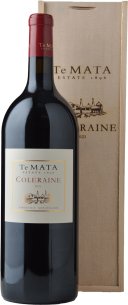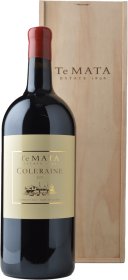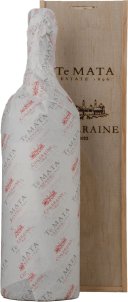Chateau Lynch-Bages 5me cru classe
Lynch-Bages is an iconic fifth growth of Pauillac and has the distinction of having produced the only wine that has ever been sent into space. Established in the early 1700s, the wine was labelled Chateau Jurine Bages at the time of the 1855 classification, later renamed in recognition of earlier owners the Lynch family. Jean-Charles Cazes purchased the property in the 1930s, later passing the management of the estate to his grandson Jean-Michel Cazes who modernised the winery and was a prolific spruiker of not just his own wines, but those of all Bordeaux throughout the 70s and beyond. Now managed by the next generation, (another Jean-Charles) Lynch-Bages continues to produce Cabernet Sauvignon-led wines of great concentration, offering ripe cassis and enviable cellaring potential.
CHATEAU LE TERTRE ROTEBOEUF Grand cru
Beginning with his first vintage at Tertre Roteboeuf in 1978, François Mitjavile didnt need long to grow his (staunchly!) unclassified estate into one of the most respected names in St Emilion. Part winemaker, part philosopher, Mitjavile is one of the great characters of Bordeaux. He could be considered almost Burgundian in his approach - the opulence and grandeur are for his wines, not his front gate, the cellars are not gilded halls and statues. Mitjavile generally picks late, uses 100% new oak, and produces no second wine. Truly one of the personalities of the region.
Chateau Ducru-Beaucaillou 2me cru classe
Taking its name from its uniquely rocky terroir (beau caillou translates as beautiful stones), and Bertrand Ducru who purchased the estate in 1795, what we know today as Chateau Ducru Beaucaillou as a wine producing estate, has history stretches back to the 13th century. Owned today by The Borie family (who have long-standing roots of their own in Bordeaux), the Chateau is, according to many, producing the best wines in their history at this very moment. The 2016 vintage has already been hailed as yet another monumental success for the winery with Antonio Galloni praising it as simply magnificent.
Chateau Leoville-Las-Cases 2me cru classe
With one of the longest and most pedigreed histories in the Medoc region, Chateau Leoville-Las-Cases has passed through the hands of some of Frances most notable and wealthiest noble families, culminating in the Las Cases family - the final royal family to hold title to the Chateau. Up until the French Revolution, after which large portions of it were sold off, it was one of the largest vineyards in Bordeaux. Today, the estate remains family owned by the Delons, of which brother Jean Hubert and sister Genevieve manage proceedings. Famed for producing a wine of structure, power, and traditional style, the 2016 vintage has earned outstandingly high praise, including a score of 100 from Andrew Caillared and a 19/20 from Jancis Robinson who praised its extraordinary vitality and energy and proclaimed it glorious to taste now.
Château Ducru-Beaucaillou St-Julien
Reputed to be the leading star of the ''Super Seconds'' of Bordeuax, Chateau Ducru-Beaucaillou is set over 50 hectares of vineyards in the south of St-Julien. The wine is composed from predominately Cabernet Sauvignon and Merlot, with lesser influence from Cabernet Franc and Petit Verdot and spends around 18 months in half new and half seasoned oak barriques. The 2010 vintage has conspired to produce what could arguably called one of the greatest releases of this wine, resplendent with fine, firm tannin, subtle oak, quiet power and a capacity to cellar for another half century.
Te Mata Estate Coleraine Cabernet Sauvignon Merlot Cabernet Franc
TE MATA ESTATE Coleraine. Cepage may include Cabernet Sauvignon, Merlot, and Cabernet Franc. Hawkes Bay, New Zealand
Vinedo Chadwick Cabernet
Chateau Haut Bailly Pessac
Château Montrose Saint-Estèphe
Te Mata Estate Coleraine Cabernet Merlot
Te Matas Hawkes Bay estate is a prestigious winery with a rich history, producing some of New Zealands most celebrated wines. If the Langtons Classification crossed the Tasman, Te Mata Coleraine would sit alongside Grange at its very pinnacle. Established, esteemed, outstanding vintage after vintage, the glowing adjectives come thick and fast.

























